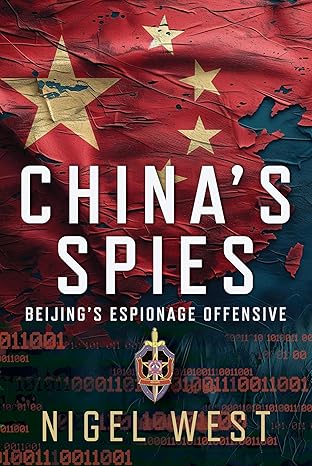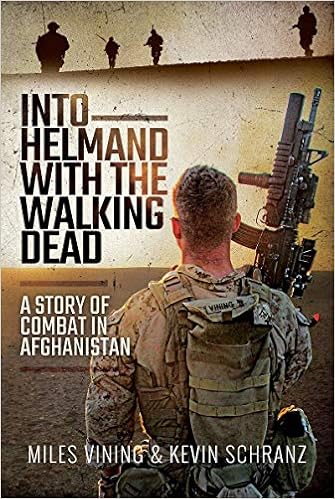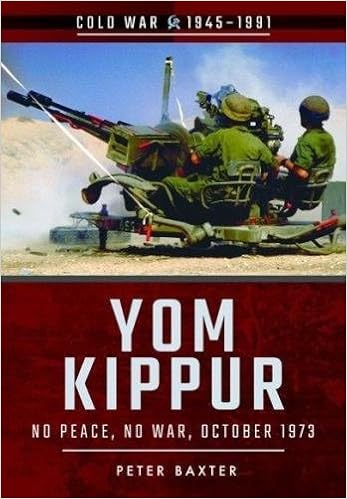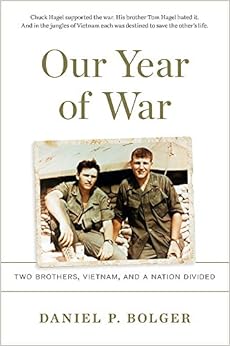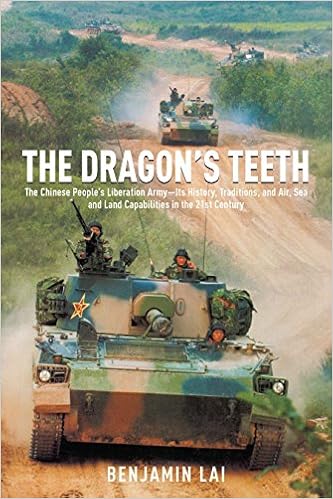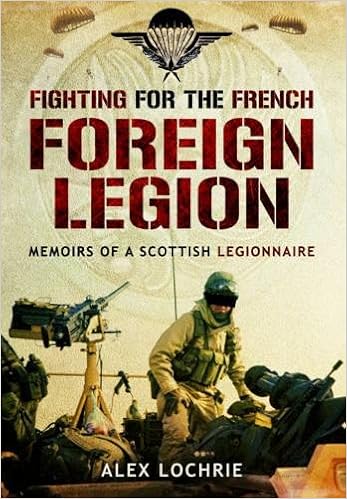"Two Arrows Crossed" A History of U.S. Army Special Forces Branch Insignia
By Bob Seals
Abstract: In April 1987, the U.S. Army established Special Forces (SF) as a branch. Crossed arrows were the new SF branch insignia, reauthorizing the wear of a unique Army uniform item originally worn during the closing days of the American frontier. The reestablishment honored the Indian Scouts, the irregulars who first wore the arrows in 1890, and ended almost one hundred years of repeated requests to use the insignia.

Original 1890 U.S. Scout insignia, authors collection.
On June 19 1987, Department of the Army General Orders Number 35, Army Special Forces (SF) Branch, was issued. By order of General John A. Wickham, Jr., the thirtieth Army Chief of Staff, SF was “established as a basic branch of the Army effective 9 April 1987.” The insignia for the newest branch in the Army was “Two crossed arrows 3/4 inch in height and 1 3/8 inches.”[1] Originally worn in 1890 by U.S. Indian Scouts, the arrows are now on the uniforms, regimental insignia, and coat of arms for all Active Duty and National Guard SF soldiers.[2]
This Army history is generally known. What is not commonly known is the story of the visionary First Lieutenant who designed the insignia, his tragic death, and the events that led to reintroduction of the arrows. This article surveys the history of Army crossed arrows including their initial use, wear, and numerous unsuccessful SF attempts to wear the arrows again before 1987. Over time, this advocacy led to the 1st SF Regiment “tribe” of Army Special Operations Forces (ARSOF) wearing the insignia first worn as the Indian Wars came to an end.[3]
Please note that the term “Indian” as used in this article is in keeping with the naming conventions used when the Scouts wore crossed arrows. The author’s belief is that the use of the insignia by SF, like the arrow shaped Shoulder Sleeve Insignia (SSI), honors and celebrates the warrior legacy of our Native Americans. Sixteen Medals of Honor were awarded to Scouts from 1869 to 1890 for “gallant conduct,” “invaluable service,” and “intrepidity in action” in recognition of their valor.[4]
Introduction and First Use
The use of Native American “Guides to the West” can be traced back to the earliest days of the U.S. Army. However, it was not until the closing days of the American frontier that a serious proposal was made to turn such irregulars into “an Indian regiment” of trained and uniformed mounted scouts in small troops. In 1889, Army department commanders in the west were granted authority to organize such scout troops for “experimental service.”[5] Perhaps the most determined champion of the concept was First Lieutenant Edward L. Casey, of the 22nd Infantry Regiment. Casey was a visionary 1873 graduate of U.S. Military Academy, and highly regarded frontier veteran with scout service under Colonel Nelson A. Miles in 1876-77.[6]

Lieutenant Casey, Commandant of Cheyenne Scouts
According to Casey, who commanded a small Indian Scout detachment at Fort Keogh, Montana, in the Department of the Dakotas, his men were quite capable of more organized soldiering. As such, they should be properly armed, fed, trained, paid, quartered, and uniformed.[7] “Big Red Nose,” as Casey was known to his men, traveled to Washington, D.C. on a leave of absence in March 1890 to press the Army for authorization to raise his scouts to a 100-man demonstration troop for “inspection during the coming summer encampment.”
Casey’s concept, approved by the Army’s Commanding General John M. Schofield during the lobbying visit, was a “modified form” of an earlier proposal with significant modifications. His scouts were to be issued a “uniform…the same as that of white soldiers, but with distinctive facings and modifications.” One of the modifications, worn on the fatigue hat, was to be “two arrows crossed…made of metal, 3 inches in length, the letters U.S.S. in the upper intersection.” The crossed arrows were also to appear on scout guidons and the spiked Pattern 1881 Dress Helmets.[8] In November of 1875 the Army had transitioned from the European inspired hunting horn as infantry insignia to “two gold-embroidered rifles without bayonets, barrels upward,” so the crossed arrow design was a logical design adaptation.[9]

Cloth 2nd Infantry patch from interwar period.
Recruiting went slow over the summer, but Casey worked his scouts hard. His troop had horse mounted and unmounted drills in the morning followed by afternoon “fatigue duties.” These included gardening and building log cabins before a brutal winter. Within months his troop was celebrated by artist Frederick Remington as a “perfectly uniformed and organized troop” after a Montana visit. Unfortunately, this perfection was short lived as Lieutenant Casey was tragically killed on January 7, 1891 at White River, South Dakota while attempting to parlay a truce in the aftermath of the Ghost Dance tragedy at Wounded Knee. “One of the most brilliant and beloved officers of the service” was gone, but the Indian Scouts and their crossed arrows continued.[10]
As the frontier closed and the Army slowly modernized in the twentieth century, Scout arrows changed also. The traditional blue uniform was gradually replaced by olive drab, and by 1907 crossed arrows were temporarily gone as the Army removed all metal insignia on campaign hats. Scout collar insignia now consisted of the block letters USS for U.S. Scouts. However, three years later the crossed arrows returned on the enlisted uniform collar disk insignia. Scout numbers dwindled, and by 1922, only twenty-three remained on Army rolls. Assigned to the uninspiring sounding Detached Enlisted Men’s List, they were again authorized arrows on their collar disks, and were mainly used as a casual “labor force” during the interwar period. Wear of the crossed arrow insignia was seemingly casual also, and scouts wore a variety of issued collar insignia. A small Apache detachment continued at Fort Huachuca, Arizona until 1943 and the last Scout retired five years later.[11]
A second Army unit, unrelated to the Indian Scouts, also wore crossed arrows after the First World War. In March 1924, the Second Infantry Regiment received permission to wear two crossed red arrows, described as “an ancient Infantry weapon” on a blue field. Worn on “the right cuff of the service coat” the arrows commemorated the Seminole and California Indian campaigns of the previous century. Headquartered at Fort Sheridan, Illinois, the regiment also wore a Distinctive Unit Insignia (DUI) or unit crest. The regiment had the unique honor of “two different distinctive insignia” until March 1936 when War Department authorization to wear the two-inch arrows on the coat was withdrawn.[12]
U.S. entry into World War II set in motion a series of events leading to the third use of crossed arrows by a combined American-Canadian Army unit, the First Special Service Force (FSSF). The FSSF was “a commando force, trained in winter mountain warfare, to conduct raids against strategic targets in Nazi-occupied Europe.” Activated at Fort William Henry Harrison, Montana, on 9 July 1942, the FSSF was given a scant six months to “prepare for combat.”[13] This unique unit was commanded by U.S. Army Coast Artillery Colonel Robert T. Frederick. One of his officers “suggested naming subordinate units after Indian tribes” and calling Soldiers “Braves.” These were not adopted but later in July a memorandum to the War Department requested that the unit “be authorized to wear the former insignia of the Indian Scouts” since “the entire motif of this force has been set up along Indian lines.”[14] Led by COL Frederick, who was awarded two Distinguished Service Crosses and eight Purple Hearts during the war, the Force earned six campaign streamers and the nickname “The Devil’s Brigade” at Anzio for their aggressive night patrols. Disbanded on 6 January 1945 near Menton, France, the wear of crossed arrows during the war was over. However, the FSSF legacy continued as some veterans soldiered on and migrated into SF Groups in the early 1950s.[15]
The Communist North Korean invasion of South Korea in June 1950 set in motion a series of events leading to the fourth request to wear the crossed arrows. The invasion and subsequent American intervention in Korea demonstrated the Army’s unpreparedness for combat. This unpreparedness included an inability to conduct unconventional warfare (UW). The need for that capability added urgency to Army planning efforts and led to the creation of SF units. The first SF Group, the 10th SF Group, was activated at Fort Bragg, North Carolina (NC) on 11 June 1952. The group was commanded by a World War II Office of Strategic Services (OSS) veteran of Europe and the Pacific, COL Aaron Bank.[16]
Bank pursued several “distinctive” uniform initiatives through the higher headquarters Psychological Warfare Center at Bragg to help build an identity for the new unit. These uniform proposals included an “official unit patch” or SSI, and crossed arrows as branch insignia, as worn by the FSSF. Four months after activation a 20 October 1952 request was submitted for wear of crossed arrows by the singular SF Group in the Army. Supported by the Center’s commander COL Carl H. Karlstad, Army Field Forces Command disapproved the request. Bank later described himself as “perturbed” over his failures to gain approval for the uniform items.[17]
With the adoption of the Combat Arms Regiment System (CARS) in 1957, the Army three years later assigned the three SF Groups to the newly created 1st SF Regiment for lineage and honors. Approved in July 1960, the Regiment inherited the FSSF lineage and honors. The Regimental Coat of Arms and Distinctive Unit Insignia (DUI) incorporated crossed arrows and a V-42 knife used by the Force. Not forgotten, SF had visible reminders of the Force. A new President, and Army study of “Special Warfare” brought the use of crossed arrows as branch insignia up again.
The fifth request to wear the crossed arrows began as with the new 35th President of the United States, John F. Kennedy. In 1961, the President’s new “flexible response” National Security Strategy to a wide spectrum of conflict, including Communist supported “wars of national liberation” resulted in increased Department of Defense interest regarding “special warfare.” The U.S. Army “took the President’s vision seriously” and one result was the Continental Army Command (CONARC) directed Special Warfare Board held at Fort Bragg in January of 1962. Chaired by the XVIII Airborne Corps Commander Lieutenant General (LTG) Hamilton L. Howze, the board made wide ranging recommendations on special warfare related equipment, training, and personnel matters.[18]
One recommendation from the 229-page board report was concerning “Branch Insignia.” Once again, crossed arrows were proposed as the SF branch insignia for personnel assigned to the growing number of SF groups. Championed by the creative Special Warfare Center commander Brigadier General (BG) William P. Yarborough, the request had been originally submitted in November of 1961, in the wake of President Kennedy’s memorable visit to Fort Bragg. CONARC rejected the board’s recommendation, along with BG Yarborough’s proposed issued “Bowie knife” for SF. After retirement, Yarborough, who designed the parachute badge in World War II, reflected that “little things like this were looked upon with disdain because our Army has always rejected the intangible things.”[19] Disdain or not, evidence suggests that locally made unauthorized branch insignia crossed arrows were worn by SF in 1964-1965.[20]
As Army involvement in the Vietnam War headed towards an end in 1972, an “Interim Change” to uniform regulations set in motion the sixth request to wear crossed arrows. A 2 May message authorized “officers, warrant officers, and enlisted pers” while assigned to armored cavalry regiments or separate cavalry troops to wear the “crossed sabre insignia in lieu of branch insignia” on an optional basis. Seeing an opening with this “precedence,” COL W.C. Norman, Commander of the Security Assistance Force (SAF) for Latin American, 3rd Battalion, 7th SF Group, requested “Crossed Arrow” insignia as worn by the FSSF in August of 1973. Only “SF qualified personnel would wear the insignia” and only while either in or “enroute” to an SF unit. As before, this request was “received and denied” since, according to the Department of the Army, SF units already had “adequate identification,” by this point.[22]
SF was in a fight for survival. Post-Vietnam cutbacks brought the Regiment down to 5th, 7th, and 10th SF Groups with plans to eliminate the 7th SFG. With more important concerns than branch insignia, it took a new decade, President, the Operation EAGLE CLAW tragedy in Iran, and threats from terrorism and insurgencies for a “renewed emphasis on special operations in the 1980s.” This emphasis and revitalization helped make the seventh request for wear of the crossed arrows a successful one. With the inauguration of the 40th President, Ronald W. Reagan, in January of 1981, increased support now existed for the military in general and confronting threats abroad. Some threats were close to home such as troubling Communist insurgent movements in Central and South America.[23]
With a congress and an administration anxious to avoid “another Vietnam,” Army SF again assumed the Foreign Internal Defense (FID) mission. Mainly conducted by 7th SF Group, such missions in our hemisphere helped to “revitalize SF that had almost been eliminated after Vietnam” and increasingly led to greater Army recognition during the 1980s. On 8 June 1983, a “Special Operations career field” was approved by the Army for implementation the following year. Part of the implementation was the reintroduction of crossed arrows collar insignia for enlisted SF soldiers, after yet another request, this time from the U.S. Army John F. Kennedy Special Warfare Center (USAJFKSWCS) at Fort Bragg. SF Officers continued to wear their basic branch insignia, such as infantry or armor, and were not authorized to wear the arrows.[24] After an interval of almost four decades, crossed arrows had returned in the Army.
The decade of rebuilding continued. In 1984, the 1st SF Group, oriented upon Asia, was reactivated at Fort Lewis, Washington, and on the island of Okinawa, Japan. A strange personnel management limbo existed for several years. Not yet recognized as a branch, SF was a “specialty code” or later a “functional area” for officers, seemingly only on temporary assignments and not as committed as their long serving NCOs. Later, in September 1986, a USAJFKSWCS request by its commanding general, BG James A. Guest, attempted to resolve the issue citing the “traditional ties” to the FSSF, and the fact that the “crossed arrows insignia” was already “authorized on SF unit guidons.”[25]
By 1986, the Army was studying SF becoming a separate branch, similar to the creation of an Aviation Branch in April of 1983. Strangely enough, the crossed arrows insignia issue for wear by officers was resolved before branch creation. In January of 1987, arrows were approved for officers “affiliated to the 1st Special Forces” but those “not physically assigned to a SF or Special Operations unit” could not wear the insignia.[26] Three months later 9 April 1987 Army SF was established as “the Army’s 16th career branch” with “the crossed arrows [representing] the new branch.” Additional requests that month from BG Guest eventually resolved the officer assignment wear issue and set in motion Jungle Green as the authorized SF Branch Color, similar in shade to the beret.[27] Guest later commented that “the crossed arrows were associated with SF for a long time due to the Indian Scouts,” and were in keeping with the branch concept of “soldiers working with indigenous forces.” Finally, the newest Army branch proudly wore insignia first used by the Scouts in 1890.
This article has surveyed the history of crossed arrows as U.S. Army insignia from “Casey’s Scouts,” to the First Special Service Force, and the various SF attempts to wear the arrows again, before final approval as Branch Insignia in 1987. The exception to this sought-after consistency were the SF Warrant Officers, who wore the Warrant Officer branch insignia as did all warrants in the Army. On the 86th anniversary of the Army Warrant Officer corps on 9 July 2004, all Army warrants replaced their “Eagle Rising” branch insignia for their respective branch of service insignia. At long last, all SF soldiers, be they enlisted or officers, finally shared a common insignia made famous by their celebrated predecessors. It had been quite an effort, seemingly confirming Arthur E. Du Bois, the Chief of Heraldic Section of the War Department, who wrote that “the truth that human beings respond more forcefully and happily to beauty, poetry, and romance, all of which insignia convey, than to cold fact.”[29]
| * * * |
Show Notes
| * * * |
© 2026 Bob Seals
Written by Bob Seals.
About the author:
Bob Seals is a retired Army Special Forces officer currently working at the U.S. Army John F. Kennedy Special Warfare Center and School on Fort Bragg. He lives on a small horse farm with his wife, a retired Army Veterinary Corps officer. He was fortunate to have served with several Son Tay Raiders during his career.
* Views expressed by contributors are their own and do not necessarily represent those of MilitaryHistoryOnline.com.

